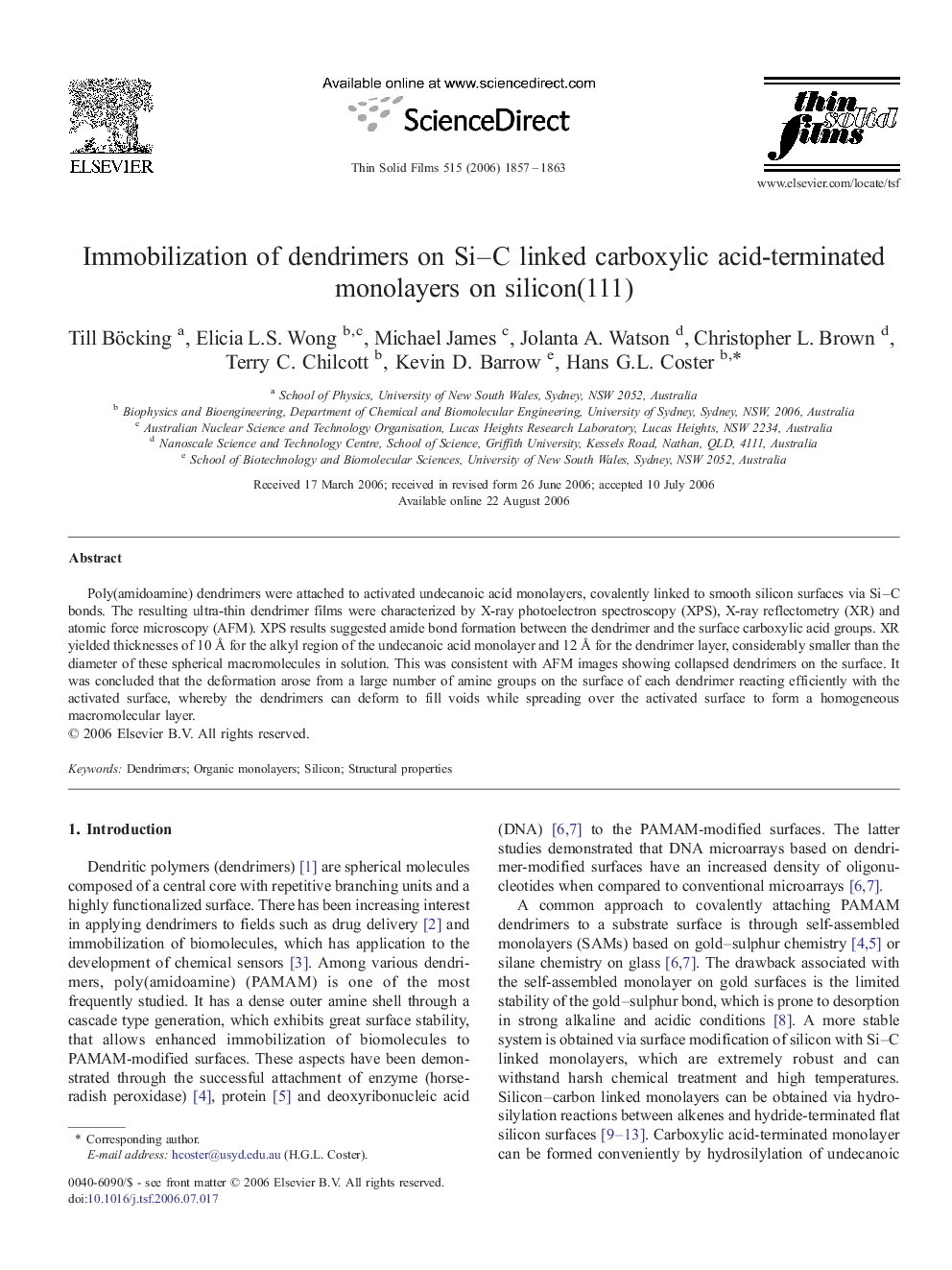| Article ID | Journal | Published Year | Pages | File Type |
|---|---|---|---|---|
| 1675111 | Thin Solid Films | 2006 | 7 Pages |
Poly(amidoamine) dendrimers were attached to activated undecanoic acid monolayers, covalently linked to smooth silicon surfaces via Si–C bonds. The resulting ultra-thin dendrimer films were characterized by X-ray photoelectron spectroscopy (XPS), X-ray reflectometry (XR) and atomic force microscopy (AFM). XPS results suggested amide bond formation between the dendrimer and the surface carboxylic acid groups. XR yielded thicknesses of 10 Å for the alkyl region of the undecanoic acid monolayer and 12 Å for the dendrimer layer, considerably smaller than the diameter of these spherical macromolecules in solution. This was consistent with AFM images showing collapsed dendrimers on the surface. It was concluded that the deformation arose from a large number of amine groups on the surface of each dendrimer reacting efficiently with the activated surface, whereby the dendrimers can deform to fill voids while spreading over the activated surface to form a homogeneous macromolecular layer.
